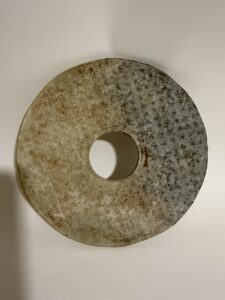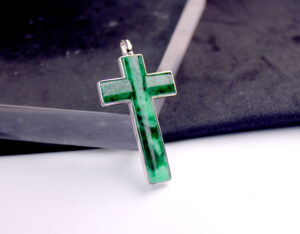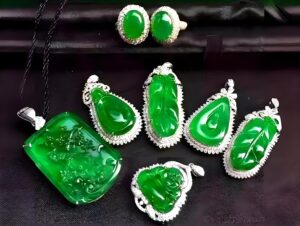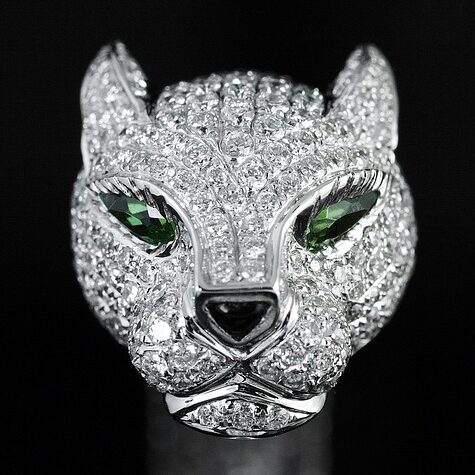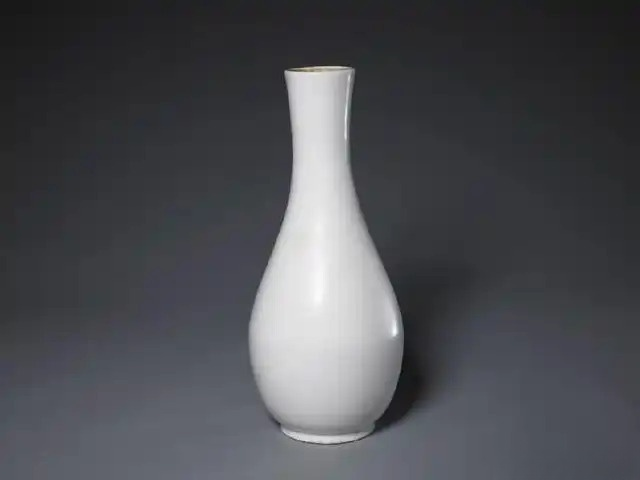
The Evolution of White Porcelain Through Chinese Dynasties
古代歷朝歷代白瓷發展演變過程和特點
While white-glazed porcelain appears commonplace today as most modern porcelain features white bases, its historical development represents one of ceramics’ most challenging technical achievements. Chinese white porcelain evolved through bluish-white glaze, egg-white glaze, sweet white glaze, ivory white glaze, before reaching pure white perfection. Not until the Song, Yuan, Ming, and Qing dynasties did white porcelain approach true whiteness. Why was this development so difficult, and what color were the earliest white porcelains?
白釉瓷器在今天看來是再普通不過的生活用瓷了,因為今天所有的瓷器都是以白色為基調了。中國白釉瓷器燒造卻是最難燒造的,中國白釉瓷器在歷史的不斷改進和演變中經歷了青白釉、卵白釉、甜白釉、象牙白釉的發展過程。宋元明清之後白釉瓷器才真正接近真正的白瓷。那麼最早的白釉瓷器是什麼顏色的呢?
Han to Sui: The Origins
漢至隋:白瓷起源
White porcelain traces back to the Eastern Han, though early “white” glaze actually appeared bluish-white. This coloration resulted from high iron content in clay bodies. The whitening process essentially involved iron reduction—white porcelain developed from celadon, with the key difference being iron content. When iron content dropped below 1%, white porcelain became achievable.
白釉瓷器最早可追溯到東漢,古代的白釉瓷器可不是白色的,而是青白色的。因為瓷器胎土中含鐵元素過多,白色瓷器變白的過程就是對鐵的提煉過程,所以白瓷是在青瓷發展起來的。如果含鐵量下降到1%以下,就能燒成白瓷。
Mature white porcelain emerged around the Sui Dynasty, approximately 400 years later than celadon. Although white porcelain began appearing during the Northern Dynasties, successful production only occurred in Sui.
成熟白瓷的出現大約在隋代,它比青瓷的出現晚約四百年。白瓷雖然在北朝時期已經開始出現,但真正燒製成功則在隋代。
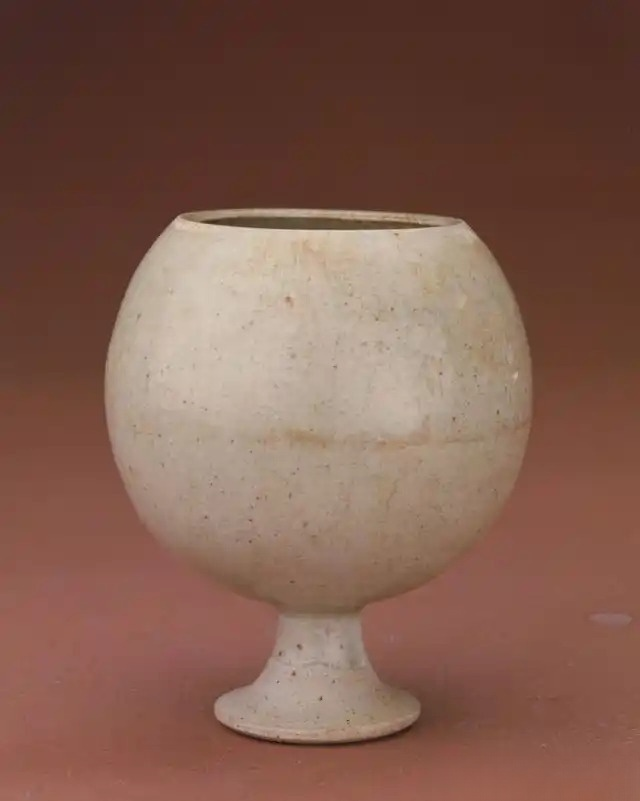
隋代白釉高足杯
Comparing Sui porcelain from Li Jingxun’s tomb (608 CE) with earlier Northern Qi examples from Fan Cui’s tomb (575 CE) shows significant glaze quality improvement—the yellowish or bluish tints of early white porcelain had disappeared. This 33-year progression marked white porcelain’s technical maturity.
從隋大業四年李靜訓墓出土的白釉瓷器看,較之北齊范粹墓出土的白瓷,釉質已有較大提高,全不見早期白瓷白中閃黃或閃青的痕跡。從北齊到隋代歷時33年,白瓷的燒製技術終於成熟。
Tang to Five Dynasties: Refinement
唐至五代:技術完善
Tang Dynasty Xing Ware
唐代邢窯
Xing Kiln began in Sui and flourished during Tang, becoming the era’s white porcelain representative. Located in ancient Xingzhou territory, Xing ware featured fine clay bodies and snow-white glaze. Their refined white porcelain embodied Tang aesthetic ideals of “resembling snow, comparable to silver.”
邢窯始燒於隋代,唐代為繁榮期,成為唐朝白釉瓷器的代表。邢窯白瓷胎質細膩,釉色潔白,體現出唐代邢窯白瓷「似雪類銀」的素雅與優美。
Five Dynasties Ding Ware
五代定窯
The Five Dynasties period saw rapid development at Ding Kiln, with techniques refining beyond Tang standards. Bowls and plates used sagger stacking during firing—vessels placed upright resulted in fully glazed rims but often unglazed bases, as seen in this representative bowl.
五代是定窯瓷業的快速發展時期,製瓷工藝比唐代更為精細。碗、盤類器採用匣鉢裝燒,器口朝上擺放,因此口沿滿釉,而底足多無釉。
Song to Yuan: Artistic Peak
宋至元:藝術高峰
Song Dynasty Ding Ware
宋代定窯
The Northern Song’s famous Ding Kiln in Hebei primarily produced white porcelain with decorations including incising, carving, stamping, and modeling.
宋代北方著名瓷窯定窯以燒造白釉瓷器為主,裝飾方法有劃花、刻花、印花和捏塑等。
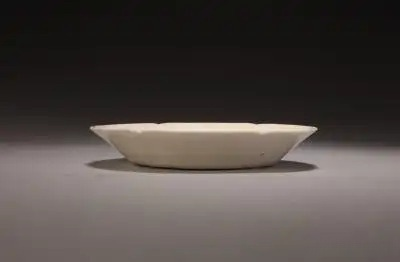
宋代定窯白瓷盤
Yuan Dynasty Egg-white Glaze
元代卵白釉
Yuan Jingdezhen created egg-white glaze, named for its resemblance to duck eggshells. Often called “Shu Fu ware” from institutional markings, these pieces featured opaque, bluish-white glaze and modest molded decorations like cloud-dragon patterns.
元代景德鎮窯創燒卵白釉,因其釉色白微泛青,恰似鴨蛋殼色澤故稱「卵白釉」。因底款有樞府銘文,所以卵白釉也叫樞府瓷。
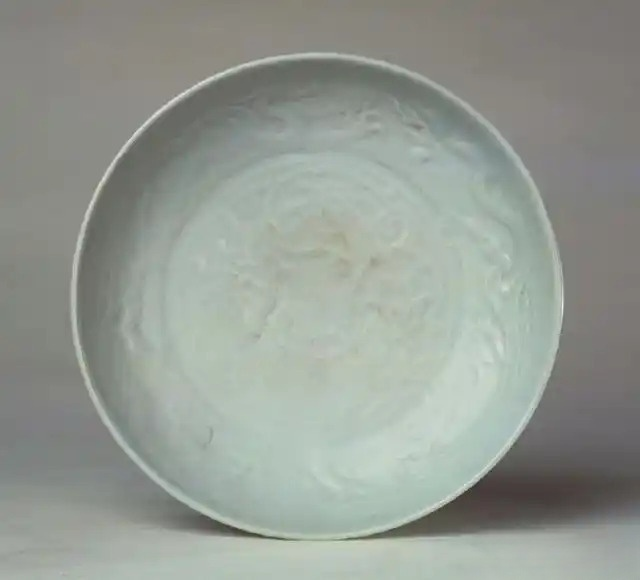
元代卵白釉印花雲龍紋盤
Markings often included “Shu Fu” (Central Bureau), indicating official commissions. The 1984 Anhui discovery of 109 inscribed pieces demonstrated their official significance. This innovation paved the way for Ming sweet white glaze.
元代白瓷上模印「樞府」字樣的瓷器一般被認為是景德鎮為「樞密院」燒製的專用瓷器。元代卵白釉瓷器的創燒,為明代甜白釉的發明奠定了基礎。
Ming to Qing: Perfection
明至清:完美境界
Ming Sweet White Glaze
明代甜白釉
Yongle-Xuande period Jingdezhen created sweet white glaze—white as frozen fat, plain as accumulated snow. The term “sweet” describes its visually pleasing whiteness, while “fill white” indicates its suitability for painted decoration.
永樂宣德時期景德鎮御窯廠創燒甜白釉,其特点是白如凝脂,素若積雪。之所以稱「甜」,是因為其潔白的釉色給人甜美之感。
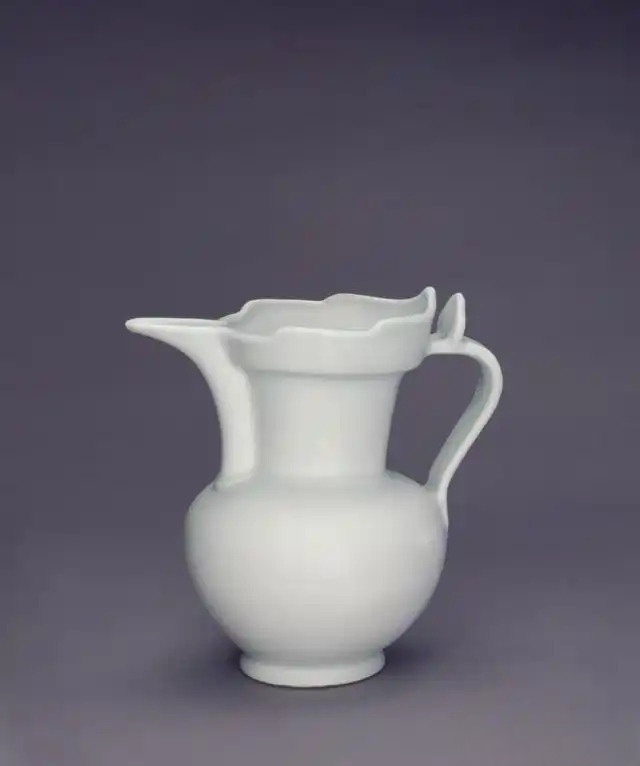
明永樂甜白釉僧帽壺
Qing Dehua Ivory White
清代德化窯象牙白
Dehua Kiln, famous for white porcelain, produced ivory white and “lard white” characterized by jade-like texture and yellowish undertones. Qing Dehua focused on utilitarian objects with bluish-white glaze.
德化窯以燒白瓷著稱,被稱為「象牙白」、「豬油白」。清代德化窯繼續燒製白瓷,但產品以日用器皿為主,釉色白中透青。
Qing Dehua white glaze vase with secret decoration
清代德化窯白釉暗花膽式瓶
Dehua’s clay contained high silica and potassium oxide (6%), creating dense, translucent bodies. Their glows showed pink or creamy tones under light, justifying the “lard white” and “ivory white” descriptions.
象牙白其瓷胎是用氧化矽含量較高的瓷土製成,其中氧化鉀含量高達6%,燒成後玻璃相較多,胎質緻密,透光度良好。
Technical Evolution Summary
技術演變總結
The white porcelain journey demonstrates continuous innovation:
白瓷發展歷程展現了持續的技術創新:
- Iron Reduction: From 1% to near-zero iron content
除鐵技術:從1%鐵含量降至接近零 - Firing Control: Progressive temperature and atmosphere management
燒製控制:逐步完善的溫度與氣氛管理 - Glaze Formulation: From bluish to pure white compositions
釉料配方:從青白到純白的釉料發展 - Clay Purification: Advanced processing techniques
胎土純化:不斷進步的原料處理技術
This evolution represents one of ceramics’ greatest achievements, spanning over fifteen centuries of refinement.
這歷程代表了陶瓷史上最偉大的成就之一,跨越了十五個世紀的不斷完善。
From 古代历朝历代白瓷发展演变过程和特点
Read More
- Collectors' Academy (144)
- Care Academy (7)
- Investment Academy (22)
- Jade Crafting Techniques (28)
- Michelle Au: The Gemstone Luminary (11)

